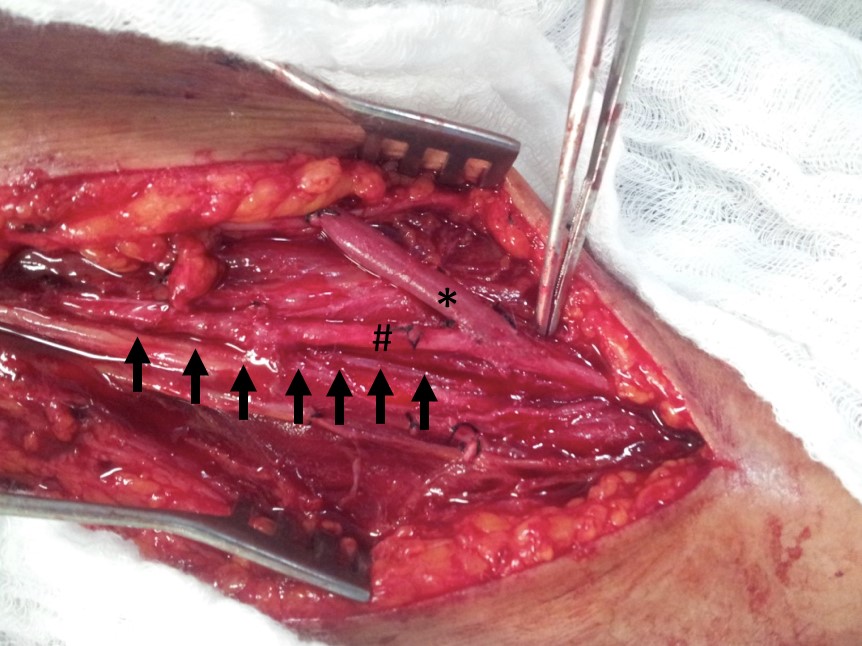Abstract
Background
There is currently a worldwide effort to increase the options for autogenous hemodialysis access.
Objectives
To evaluate patency and complications of brachial vein transposition compared to other autogenous hemodialysis accesses.
Methods
A retrospective evaluation of 43 patients and 45 procedures. Patients who did not have adequate superficial veins according to duplex scanning were allocated to brachial vein transposition. The sample was thus divided in two groups, as follows: A: brachial vein transposition n=10 and B: other autogenous accesses n=35.
Results
There were no statistical differences between the two groups in terms of age diabetes, systemic arterial hypertension, dyslipidemias, arteriopathies, neoplasms, kidney disease stage, donor artery diameter, recipient vein diameter, systolic blood pressure in the operated limb, postoperative ischemia, hematoma, or infection. There were no statistical differences in terms of patency on day 7: A 80% vs. B 90% p=0.6, on day 30: A 80% vs. B 86% p=0.6, or on day 60: A 60% vs. B 80% p=0.22. There were statistical differences between the groups for number of previous fistulae A 1.0 ± 0.44 vs. B 0.6 ± 0.3 p = 0.04 and upper limb edema A: 20% x B 0% p = 0.04. A vein with diameter of less than 3 mm was associated with an increased risk of early occlusion (RR = 8 p = 0.0125). During the study period there were no procedures using grafts.
Conclusions
Transposition of brachial vein is an alternative to arteriovenous graft.
Keywords:
brachial vein; graft; fistula first; brachial artery; hemodialysis access; arteriovenous fistula

 Thumbnail
Thumbnail
 Thumbnail
Thumbnail

